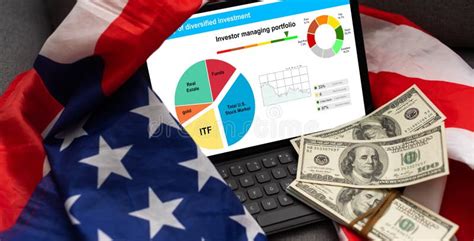Laying the Groundwork: Why a Realistic Plan Matters
For many men, the journey to financial freedom can seem daunting, often cluttered with conflicting advice and the pressure to achieve quick results. However, a realistic financial plan isn’t about overnight riches; it’s about disciplined, consistent action that tackles debt head-on and systematically builds lasting wealth. This isn’t just about numbers; it’s about gaining control, reducing stress, and securing a future where your money works for you.
The first step toward any significant financial transformation is honest self-assessment. Before you can crush debt or build wealth, you need to know exactly where you stand. This involves understanding your income, tracking your expenses meticulously, and listing all your debts with their respective interest rates and minimum payments. This clarity forms the bedrock of every decision you’ll make going forward.

Phase 1: Conquering Debt with a Strategic Assault
Debt is often the biggest obstacle to wealth creation. Eradicating it requires a focused, aggressive strategy. Start by creating a detailed budget. Categorize your spending, identify areas where you can cut back, and commit to living below your means. Every dollar saved here is a dollar that can be redirected towards debt repayment.
Prioritizing Debt: Avalanche vs. Snowball
There are two primary methods for tackling multiple debts:
- Debt Avalanche: Focus on paying off the debt with the highest interest rate first, while making minimum payments on all others. Once that’s clear, roll the payment amount into the next highest interest debt. This method saves you the most money on interest over time.
- Debt Snowball: Pay off the smallest debt first to gain psychological momentum, then roll that payment into the next smallest. This method provides quick wins, keeping you motivated, even if it costs slightly more in interest.
Choose the method that best suits your personality and stick with it. Consider side hustles or temporary additional work to generate extra income specifically for accelerating debt payments. Every extra dollar you throw at the principal will shorten your debt-free timeline and save you significant interest.
Phase 2: Building Your Financial Fortress – Emergency Fund & Smart Savings
Once high-interest debt is under control, the next critical step is to build a robust financial buffer. An emergency fund is non-negotiable. Aim to save at least three to six months’ worth of living expenses in an easily accessible, high-yield savings account. This fund acts as your personal safety net, preventing you from falling back into debt when unexpected life events occur.

Automate Your Savings
The most effective way to save is to automate it. Set up automatic transfers from your checking account to your savings account and investment accounts immediately after you get paid. “Pay yourself first” ensures that your financial goals are prioritized before discretionary spending. This discipline is a cornerstone of long-term wealth building.
Optimizing Retirement Contributions
After your emergency fund is solid, focus on maximizing your retirement contributions. If your employer offers a 401(k) match, contribute at least enough to get the full match – this is essentially free money. Beyond that, explore Roth IRAs or traditional IRAs, offering tax advantages that can significantly boost your long-term growth. The power of compound interest is your greatest ally here; start early and contribute consistently.
Phase 3: Strategic Wealth Accumulation – Investing for the Future
With debt managed and a safety net in place, it’s time to shift gears from saving to investing. Investing is where your money truly starts to work for you, generating returns and outpacing inflation over time.
Understanding Investment Vehicles
- Stocks: Ownership in companies, offering potential for high growth but also higher risk.
- Bonds: Loans to governments or corporations, generally lower risk and lower returns than stocks.
- ETFs (Exchange-Traded Funds) & Mutual Funds: Diversified portfolios of stocks and/or bonds, managed professionally or passively (index funds). These are excellent for beginners as they provide instant diversification.
- Real Estate: Can offer income (rentals) and appreciation, but requires significant capital and management.

The Power of Diversification and Long-Term Vision
Never put all your eggs in one basket. Diversify your investments across different asset classes and industries to mitigate risk. Embrace a long-term investment mindset. The market will have ups and downs, but historically, it has always trended upwards over extended periods. Avoid chasing hot stocks or attempting to time the market; consistent, diversified investing is the proven path to wealth.
Educate yourself continuously. Read books, follow reputable financial news, and understand the fundamentals of the investments you choose. Consider working with a fee-only financial advisor if you need personalized guidance on complex investment strategies or estate planning.

Phase 4: Advanced Tactics & Mindset for Financial Independence
As your wealth grows, your financial plan will evolve. Explore advanced strategies like tax-loss harvesting, rebalancing your portfolio, and considering alternative investments if they align with your risk tolerance and goals. Estate planning, including wills and trusts, becomes increasingly important to protect your assets and ensure your legacy.
The Mindset of a Wealth Builder
Building wealth is as much about mindset as it is about mechanics. Cultivate patience, discipline, and a willingness to learn from mistakes. Avoid lifestyle inflation – as your income grows, resist the urge to immediately increase your spending proportionally. Instead, funnel a larger percentage of your increased income into savings and investments.
Regularly review your financial plan. Life changes – a new job, marriage, children, or unexpected expenses – will require adjustments. Treat your financial plan as a living document, adapting it as your circumstances and goals evolve. Consistency is key; small, steady steps over time lead to monumental progress.

Conclusion: Your Path to Financial Freedom
Crushing debt and building wealth is a marathon, not a sprint. It demands commitment, self-awareness, and a willingness to make smart, often challenging, choices. By following a realistic plan that prioritizes debt elimination, establishes a strong financial base, and embraces consistent, diversified investing, men can achieve not just financial independence, but also the peace of mind that comes from knowing they are in control of their financial destiny. Start today, stay disciplined, and watch your financial future transform.




